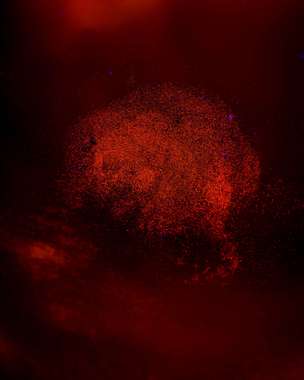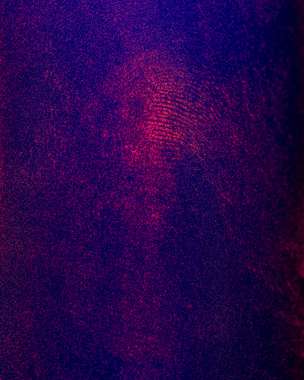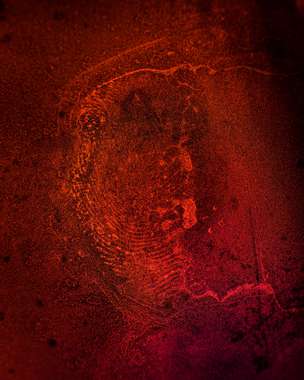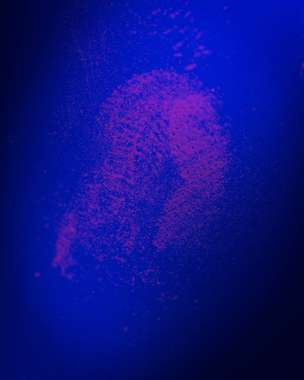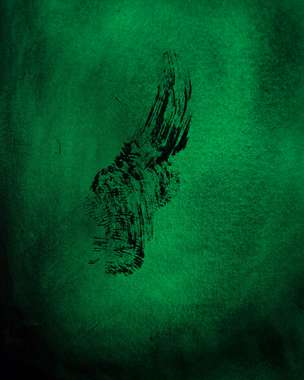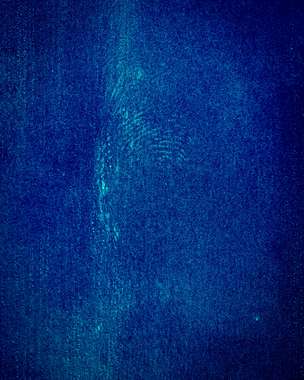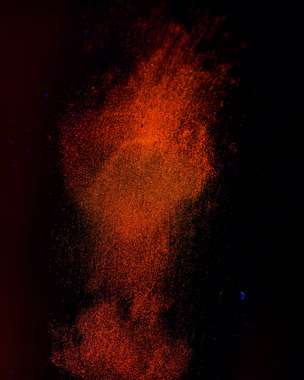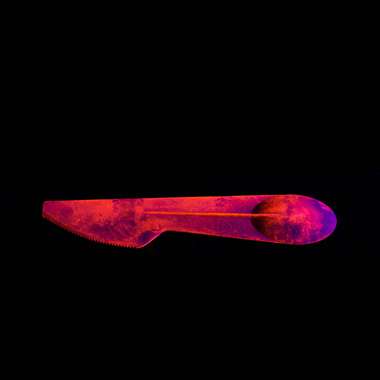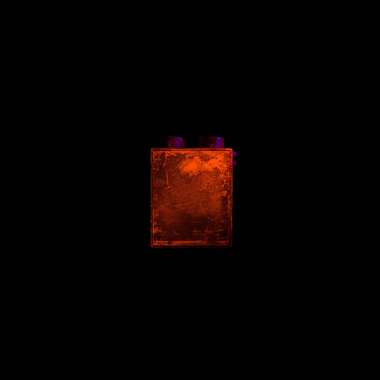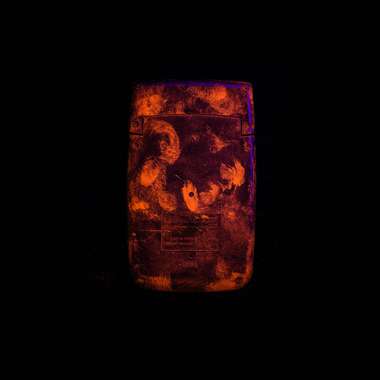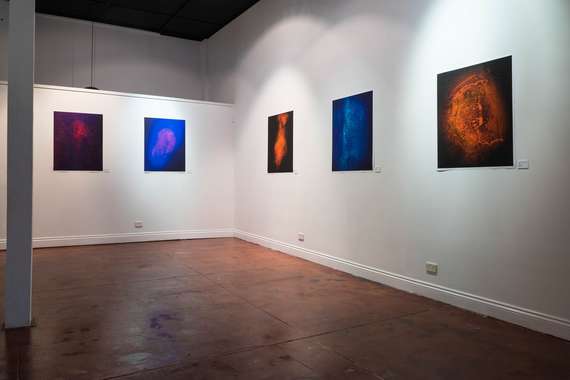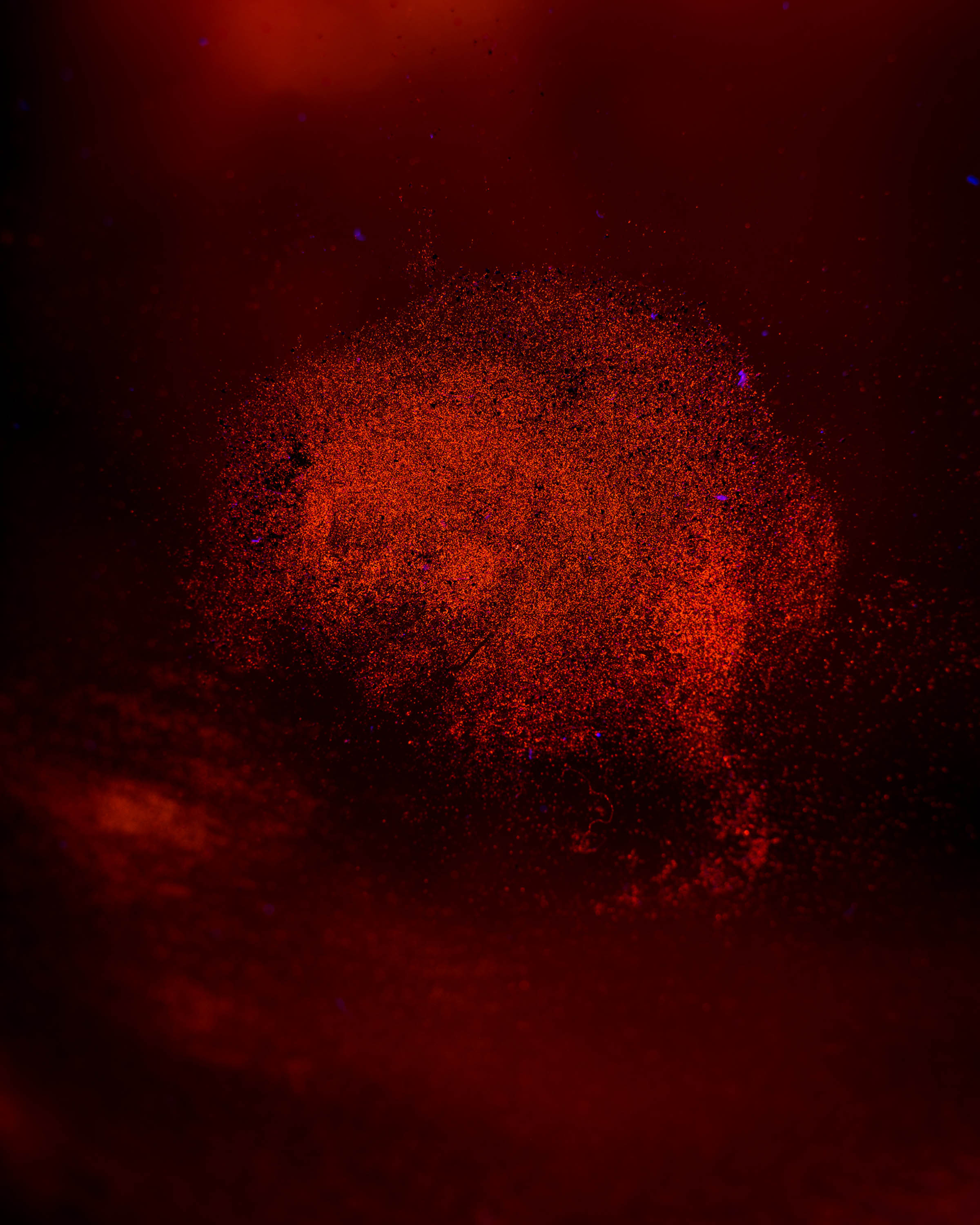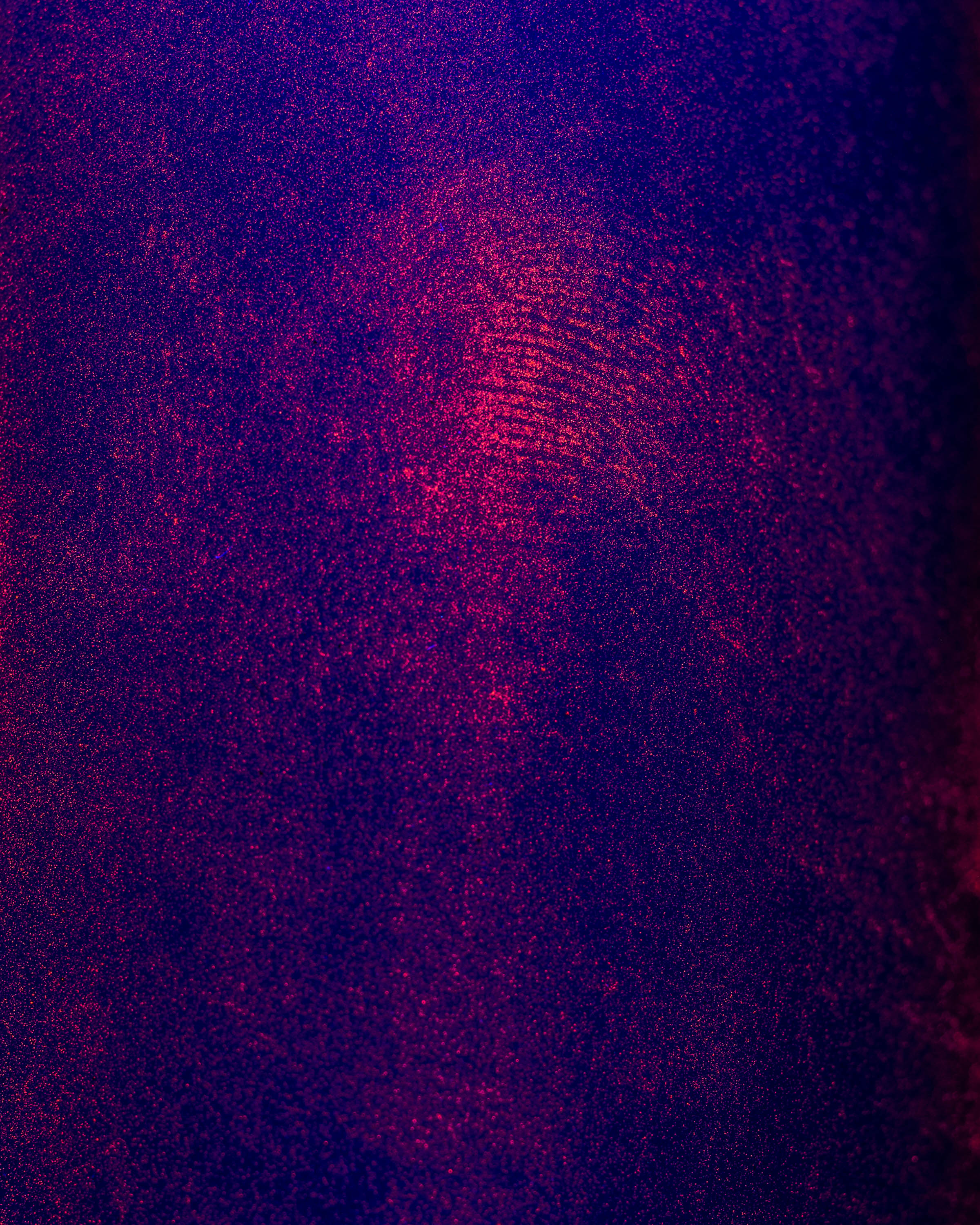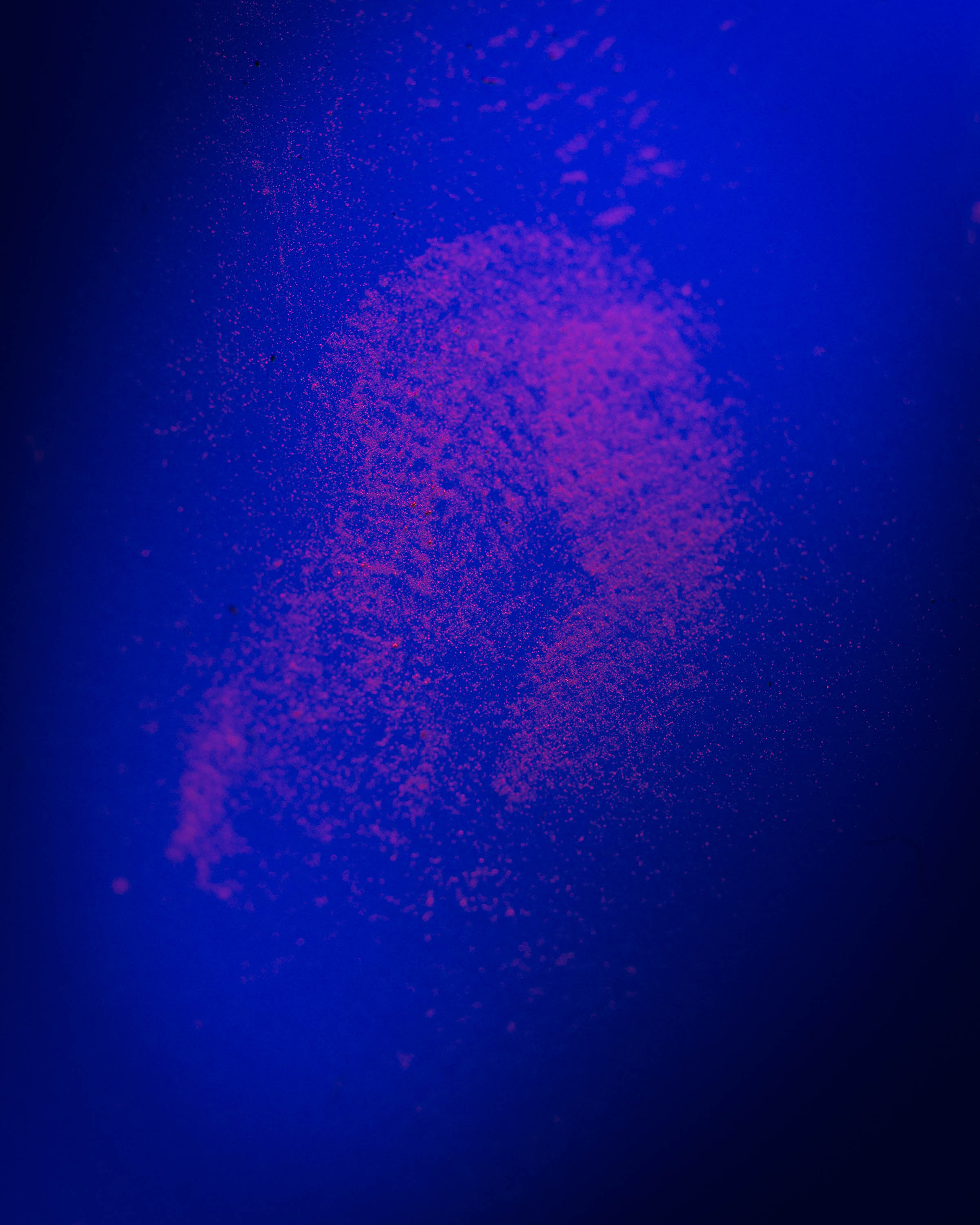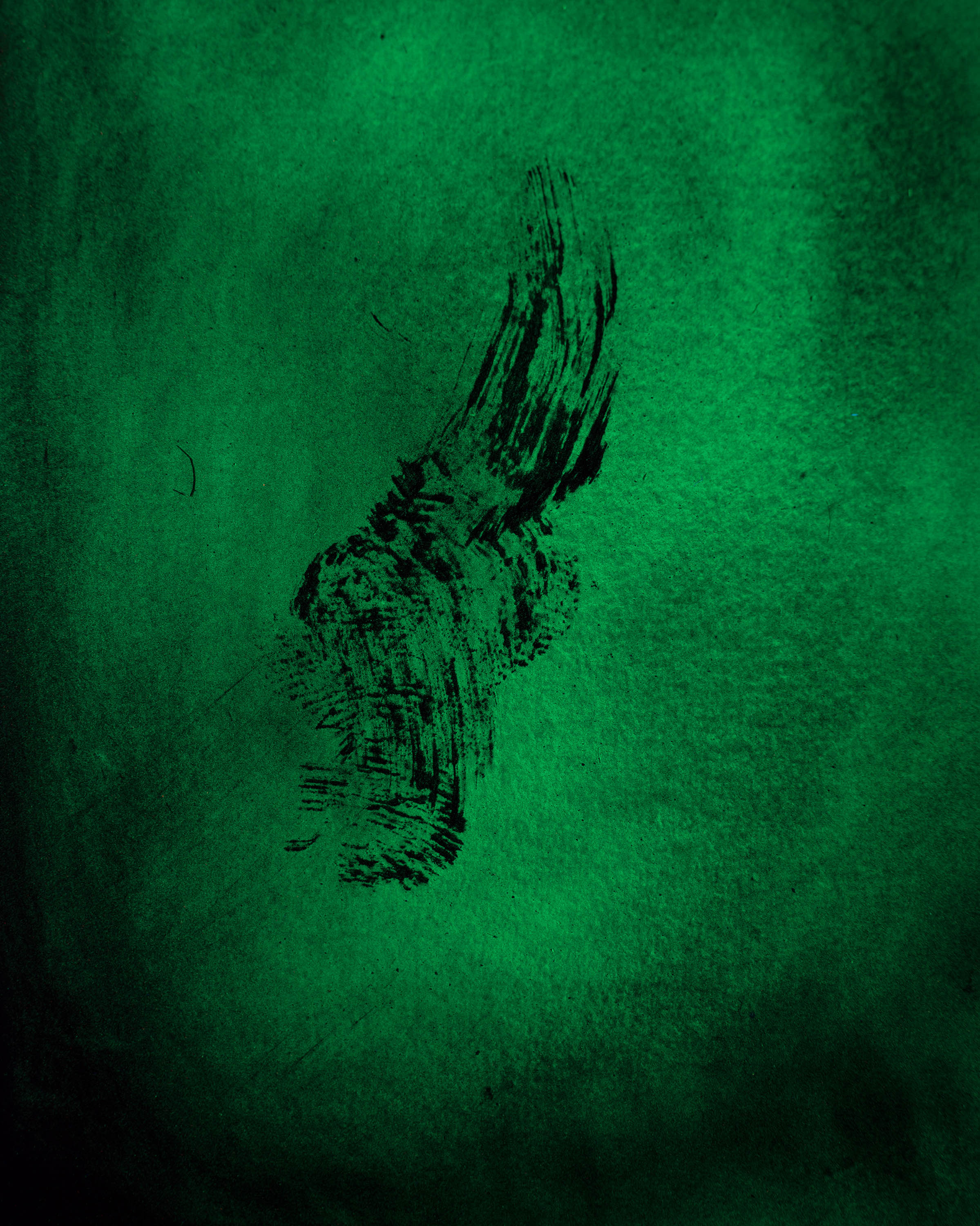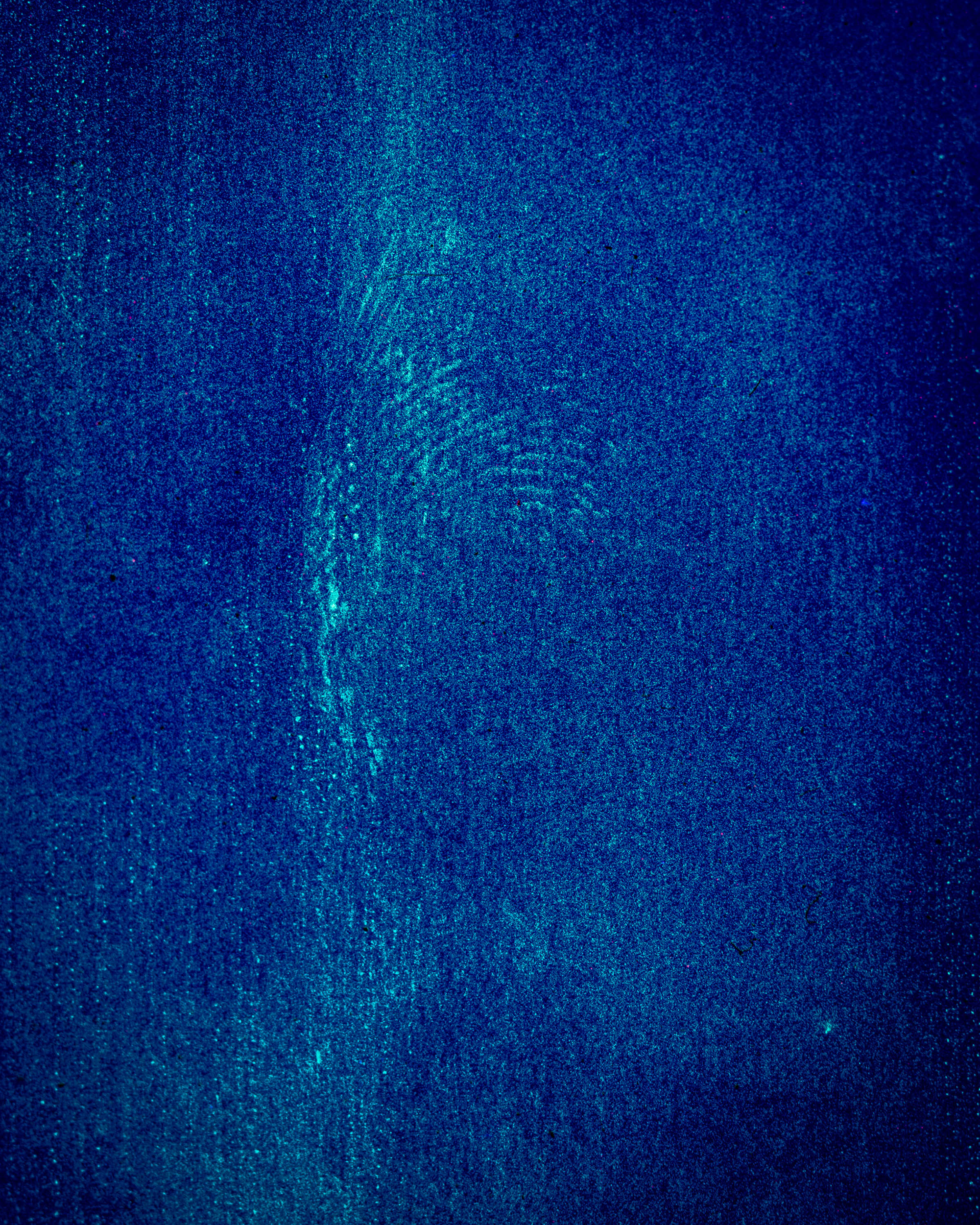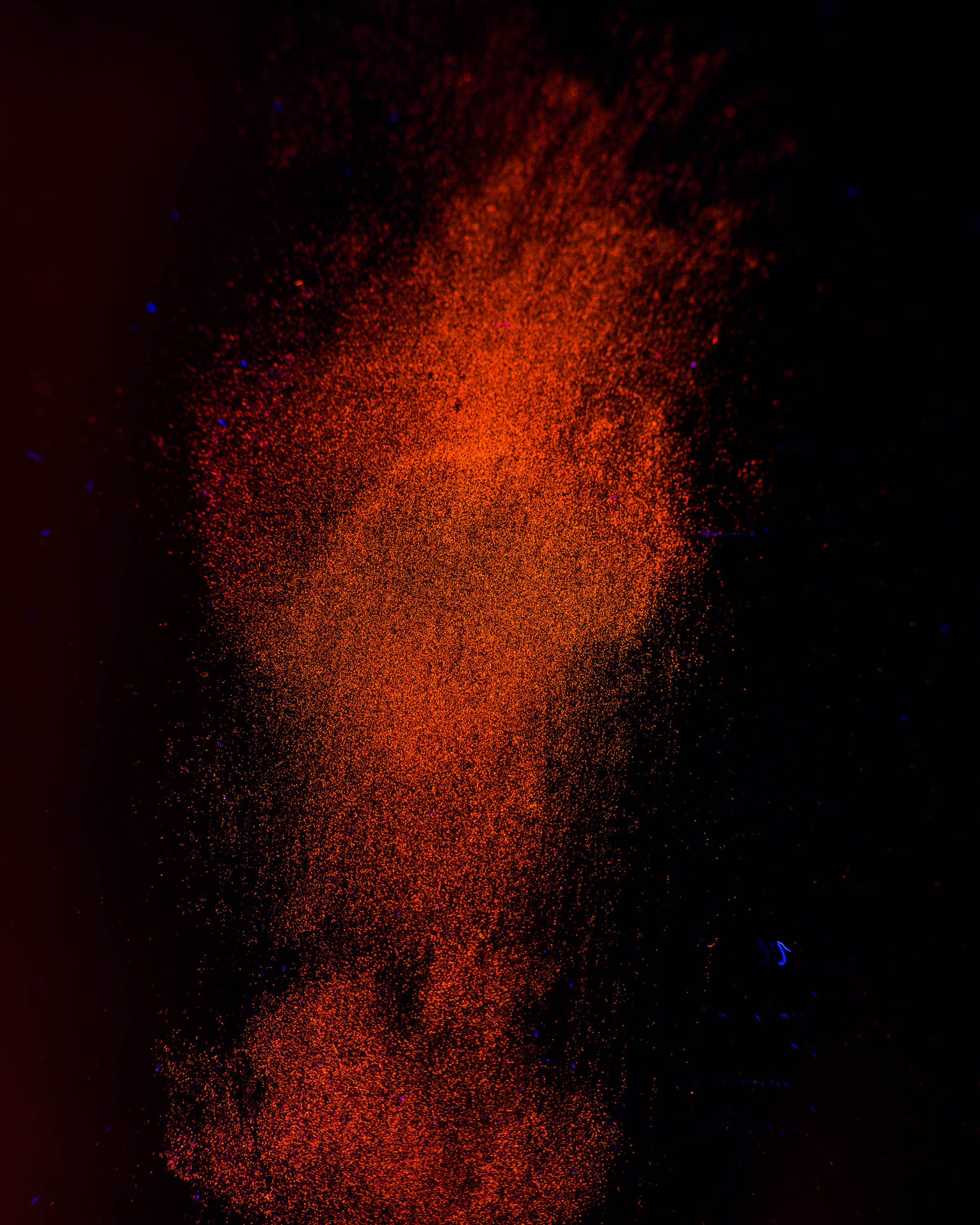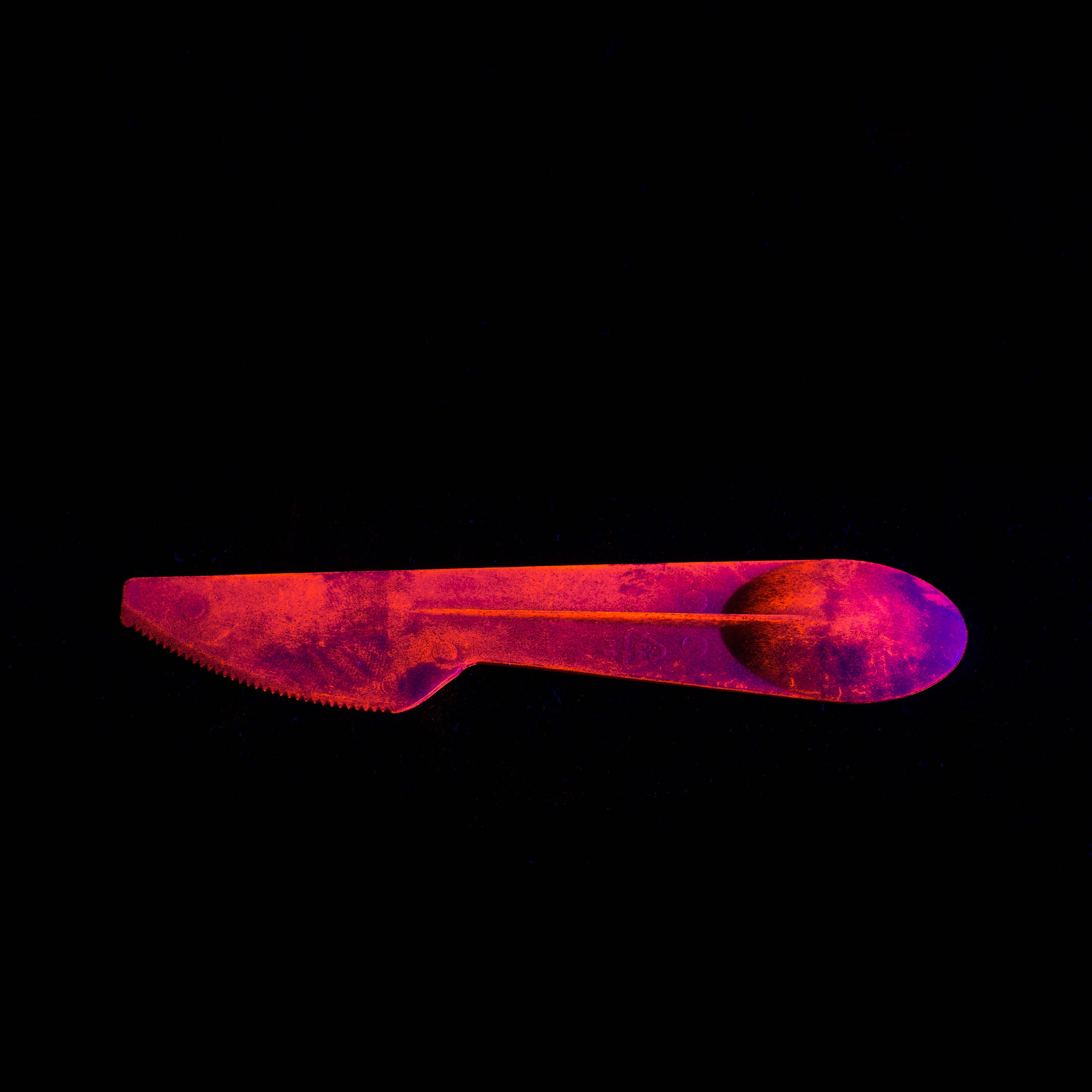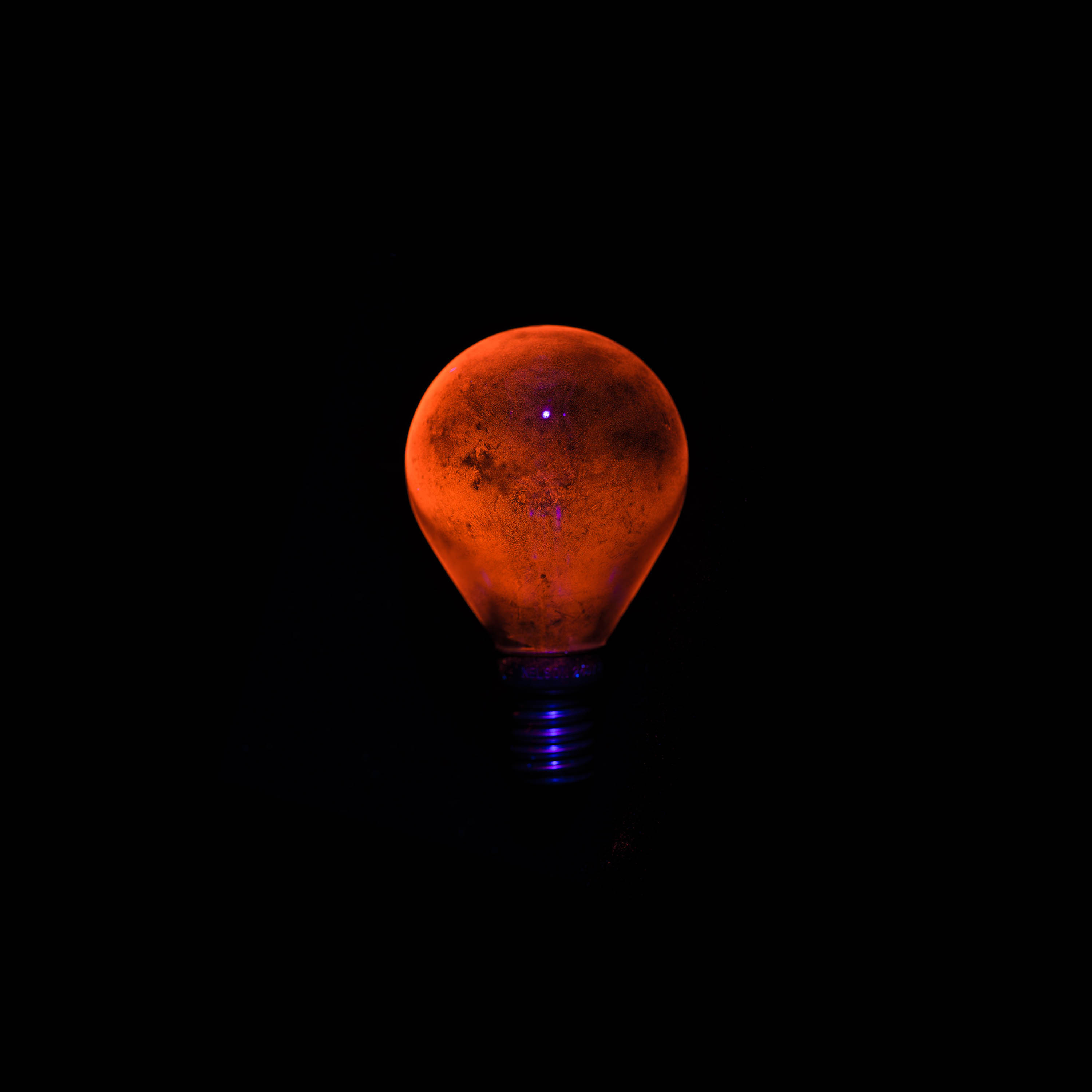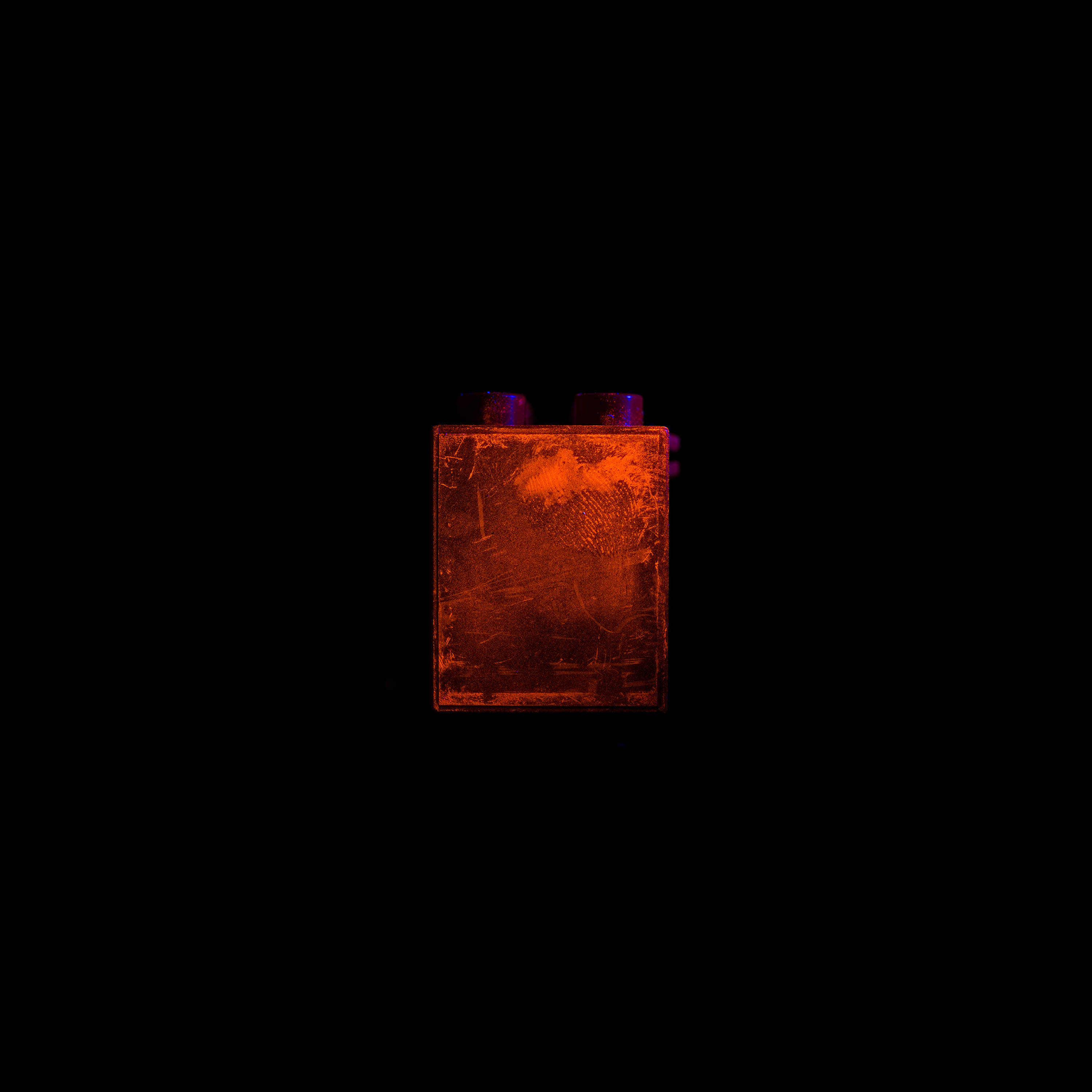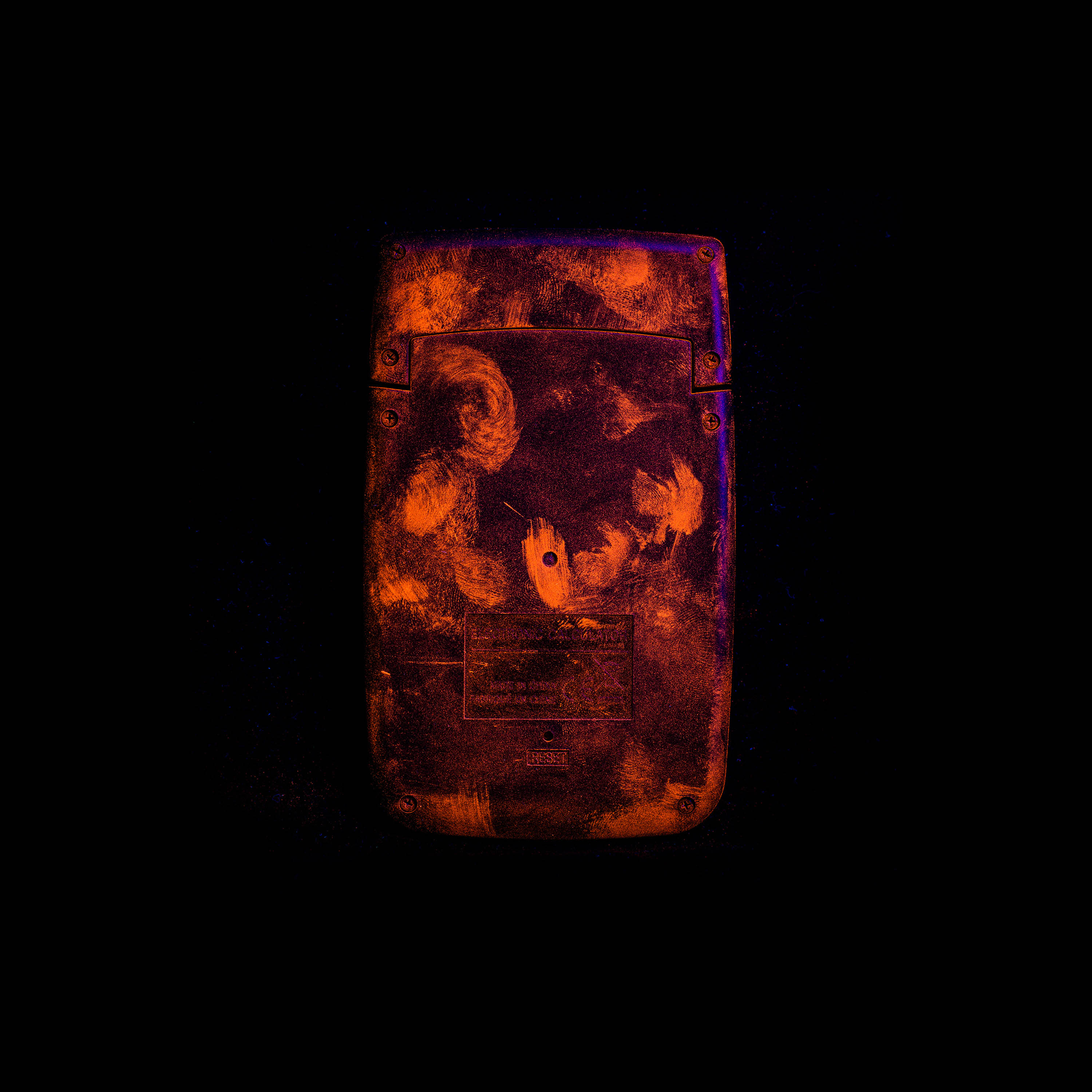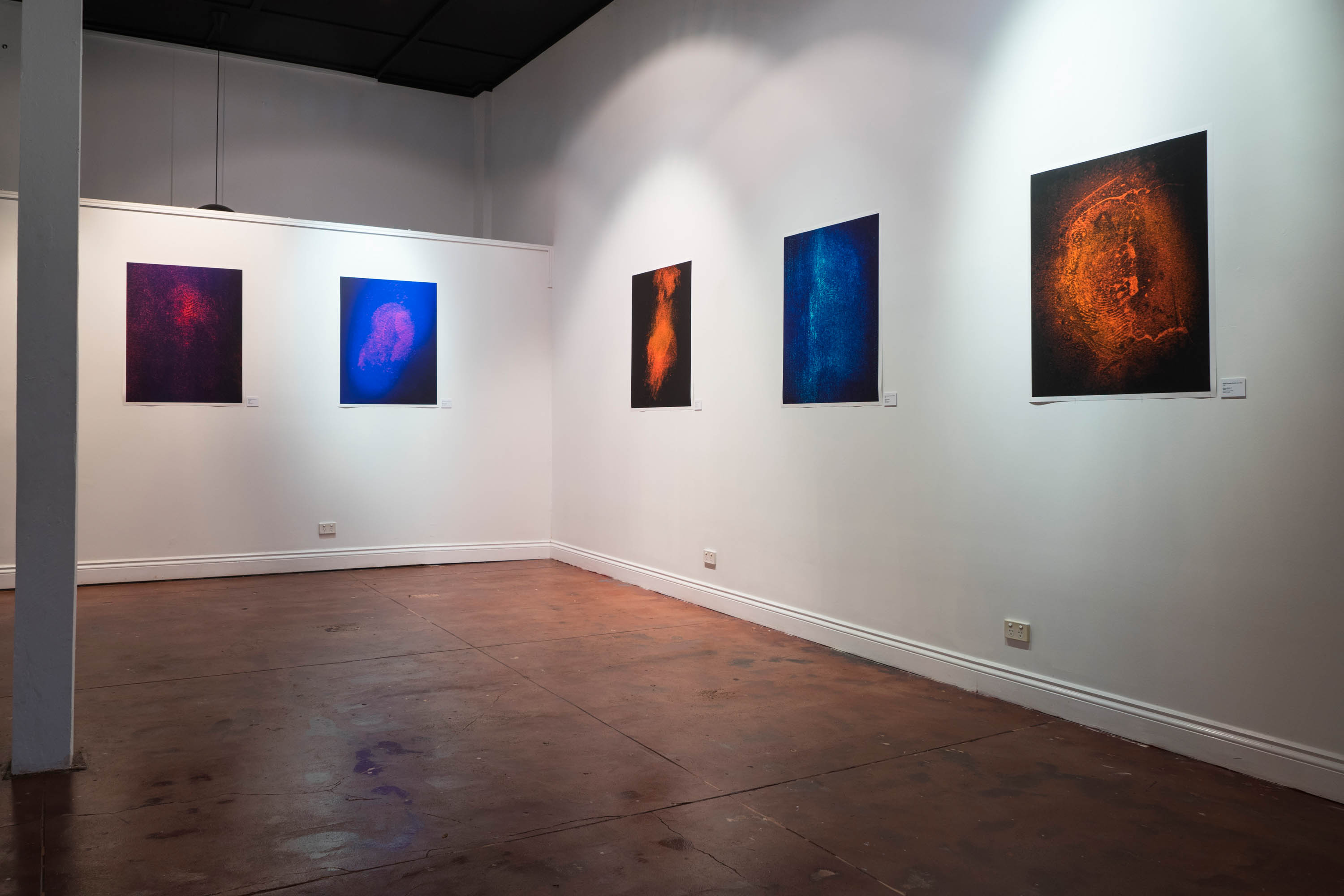Aura
by alanhill
This work has been commented by 4 curator(s). Read the comments
Title
Aura
Headline
Aura is a series of photographs of fingerprints discovered on (sealed) consumer goods.
Concept author(s)
Alan Hill & Kelly Hussey-Smith
Concept author year(s) of birth
1980 & 1982
Concept author(s) contribution
The work is co-authored
Concept author(s) Country
Australia
Friendly Competition
Competition category
Visual communication practice
Competition subcategory
static
Competition field
academic
Competition subfield
educator/researcher
Subfield description
RMIT Photography
Check out the Pleasure 2016 outlines of Memefest Friendly competition.
Description of idea
Describe your idea and concept of your work in relation to the festival outlines:
Aura began with an everyday discovery. Upon unwrapping a mass-produced picture frame, we noticed the glass was covered in fingerprints. This revelation probably shouldn’t have surprised us, because we like to think we are aware of the mechanisms and systems of global production, but their presence gave the goods a new kind of aura. The marks represented a glitch in the illusion of ‘immaculately’ produced, pleasure-inducing consumer goods; an illusion created in no small part by photography. The revelation also dismantled our way of seeing the objects in our lives (lives that had in the preceding two years become increasingly domestic and inundated with ‘products’ following the birth of our son).
We were reminded of Walter Benjamin’s lament at the loss of the aura of the original. Were we experiencing the inverse (in an age where there is arguably an aura that surrounds what is ‘new’)? We began to examine all the sealed products that entered our lives with a variety of forensic techniques. Sure enough, hidden in plain sight, was abundant evidence of the human labour behind their production.
What kind of communication approach do you use?
Aura is a series of photographs of fingerprints found on (sealed) consumer goods. We have engaged forensic methods to locate these marks; specifically fluorescent fingerprint powder, UV light, and macro photography. This combination of photography and forensic techniques means the communication approach could perhaps be best characterized as ‘evidentiary’.
What are in your opinion concrete benefits to the society because of your communication?
Our hope is that the revelation of these (human) marks can provoke viewers to consider more deeply the political and ethical issues inherent in contemporary consumer capitalism. Dorothea Lange summed up our position when she said “the camera is an instrument that teaches people how to see without a camera”.
What did you personally learn from creating your submitted work?
Creating Aura taught us that hidden on the surface of most ‘new’ things is evidence of something we intellectually understand (i.e. most of the ‘things’ in our lives are made in the Majority World and/or in questionable conditions) but are able to repress and deny. Now, every time we buy or receive something new, we consider the conditions of its production and the individuals involved.
As the project progressed, we were forced to confront the politics of the gaze we were borrowing from the world evidence, surveillance and identification. We are still not sure how to resolve this, or if in fact it requires resolution.
Why is your work, GOOD communication WORK?
We believe Aura communicates effectively because it connects the micro and macro - providing a visceral link between our routine consumption and the global systems that underpin it but usually remain abstract.
Where and how do you intent do implement your work?
As a work in progress, Aura does not yet have fixed destinations. It has been shown as large photographic prints in exhibitions, but we are interested in publishing the work.
Did your intervention had an effect on other Media. If yes, describe the effect? (Has other media reported on it- how? Were you able to change other media with your work- how?)
Not at this stage.
Curators Comments

Kevin Yuen-Kit Lo
Hi Allan, Kelly,
These are beautiful works that address an important issue in an incredibly original way. They very effectively create the link you suggest between the micro and macro, with a powerful kind of "a-ha" moment. Exploiting these trigger moments works well to make sure the concept remains in a viewer's thought and memory. They are literally alchemical and transformational, almost "magical" images...
At the same time, existing solely within the realm of "art", and quite abstract art at that, I feel they don't yet achieve their true communicational potential. When they were exhibited, was their additional information provided? As a publication, would they be further contextualised? How could the communication be made more explicit? Perhaps this explicitness is not really necessary, but I do feel that something is missing, a complementary aspect that guides viewers towards actionable behaviour.
I am currently travelling in Hong Kong and China, and the phrase "made in China" has taken on a very different connotation to me, esepcially travelling through smaller cities or rural villages (one where the majority of chinese ceramic products are made for example). It has certainly complexified my understanding of labour and geo-politics. I feel that some of this thinking is relevant for your project, and somehow, further connections can be made. I'm thinking it would be interesting to pair these striking images with something that further complexifies our thinking, once that initial moment of realisation has been triggered.
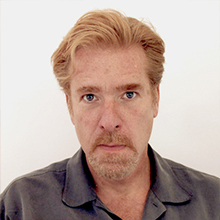
Scott Townsend
I was really struck by the simple yet significant strategy in the work. The idea of applying a forensic photographic technique showing physical evidence is in conflict with our acceptance of things like VR, simulation, and products disconnected from their production.
This could be nested into a larger strategy of documentation, interview, etc. within the idea of 'evidence.' I'm very curious what further iterations of this work might be and how it would connect to particular audiences as part of a larger program.
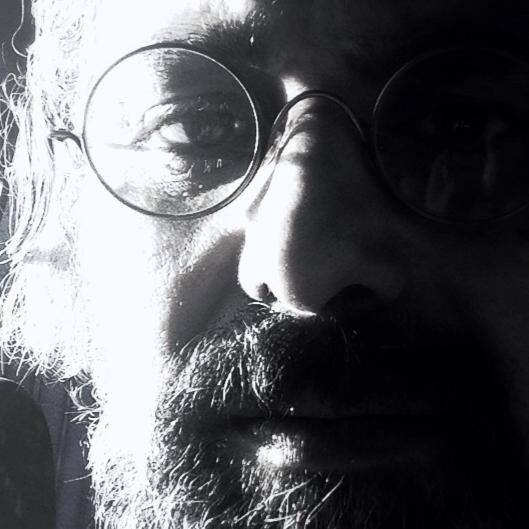
Antonio Rollo
Some of the images we see today are renderings of scientific data. We are getting used to this, indeed you are defining a new aesthetic that investigates the perceptual processes that allows us to extend our personal knowledge of a mass production object. The contemporary images help us to do things in the world. Images have the omnipotence to act on conscience and the impotence to remain stable in the information flow.
Aura is an exception. The photographs developed using scientific methods allow to expand our view of things in the world. But with Aura we are not in the lab, we're home. In our house inhabited by a stream of disposable objects, as the authors state, "immaculate" because the machine sons. The machines have no skin, have interfaces. The machines do not leave fingerprints, but combine symbols. Aura is a warm - non-vector - symbol of our opaque condition with respect to the operation of the machines. Aura inscribe the mass.
Roderick Grant
As the project progressed, we were forced to confront the politics of the gaze we were borrowing from the world evidence, surveillance and identification.
I appreciate this statement in the above text - it means we're aware of the means of investigation as having an impact on the results of the investigation - critical process, critical result. The provenance of our everyday life is rarely given such scrutiny - we often receive new-ness without a second thought given to the many hands, machines, codes and plans that have allowed an object to come into being, let alone into our hands. I'm reminded of Larry Sultan's curated series of images published simply as "Evidence" - images of archival product, safety and other type of tests and situations of unknown intent - presented to us as a reality that exists just before the reality we experience in everyday life.
This series functions in much the same manner, drawing attention to the presence of an other, and others, before we open a shoe box, a car door, a new lightbulb. That moment of suspension here, changes the nature of anticipation, from one of want to one of necessary reflection on provenance - both I think are opportunities of pleasure, and this project allows us the critical instance to consider our relation to both sensations.
I almost miss a straight up complementary series of images that details the original objects, their receipts, their cost, their place of purchase...as the later reveal of unseen provenance might have more impact. Its a project that could very much come alive through exhibition and publication. The work of Larry Sultan, even Todd McLellan might be of use in future development – how the layer of unknown hands is revealed in the realm of the real - hung print, backlit box, light table...all opportunities for further critique and viewer interaction.
Perhaps the McLellan work might spark a deconstruction of each object, to see how far the presence of humanity goes...where can we find ourselves in the objects we create, demand, tire of, dispose of. There's a continuum of pleasure to disgust, a cycle that is at once visceral and real, but also very much lived in the abstract as well.

